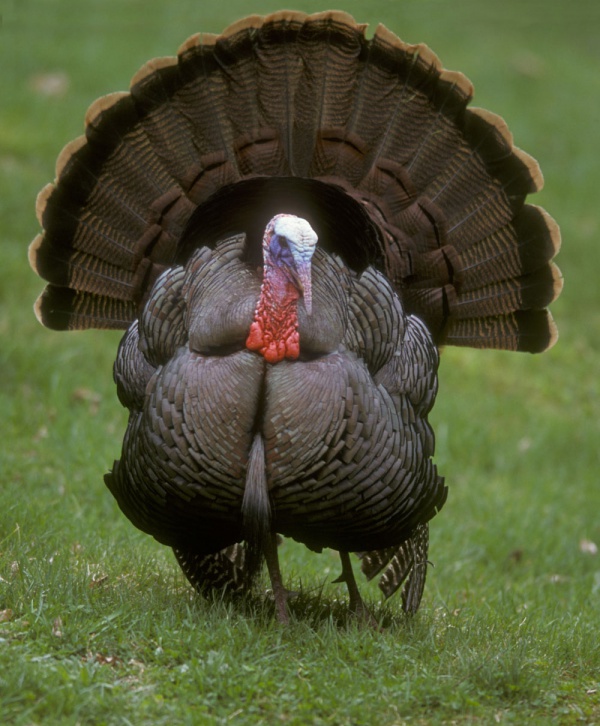Facts About Wild turkey
The wild turkey is a captivating bird native to North America, holding the distinction of being the heaviest member of the Galliformes order. It is closely related to the domestic turkey, and its name likely originated from the British importing domesticated turkeys from the Levant through Spain, mistakenly associating them with the country of Turkey. Another theory suggests that the name might have come from Turkish merchants introducing the guinea fowl to England.
When you observe a wild turkey, you'll notice some distinctive features. The males, called toms, are larger and more colorful than the females, known as hens. Toms boast striking feathers, a large tail fan, and glossy wings, while hens have more subdued coloring. These birds exhibit strong sexual dimorphism, meaning males and females look distinctly different from one another. Wild turkeys are omnivorous and forage on the ground, eating nuts, seeds, insects, and even small reptiles.
Wild turkeys prefer habitats that include a mix of hardwood forests, open areas, and patches of vegetation. Despite their considerable size, they are agile fliers with excellent eyesight, although their night vision is poor. They communicate through various calls and perform elaborate courtship displays during the mating season. Males are polygamous, mating with multiple females. After mating, females lay eggs in shallow nests and care for the young poults.
These birds face various predators, including raccoons, snakes, raptors, and various mammals, with humans also posing a significant threat. In the early 20th century, wild turkey populations declined sharply due to overhunting and habitat loss. Thanks to conservation efforts, their numbers have rebounded to around seven million in the United States today. There are six subspecies of wild turkeys, each with its own subtle differences in appearance, habitat, and behavior.
Wild turkeys have long held significance in Native American cultures, playing crucial roles in traditions, rituals, and as a food source. There's a popular myth that Benjamin Franklin wanted the turkey to be the national bird of the United States. While he did criticize the bald eagle's character in a letter, he never formally proposed the turkey as a national symbol. Nevertheless, wild turkeys hold rich cultural importance, particularly among Native American tribes, who have integrated the bird into various ceremonies and folklore throughout history.

 Canada
Canada